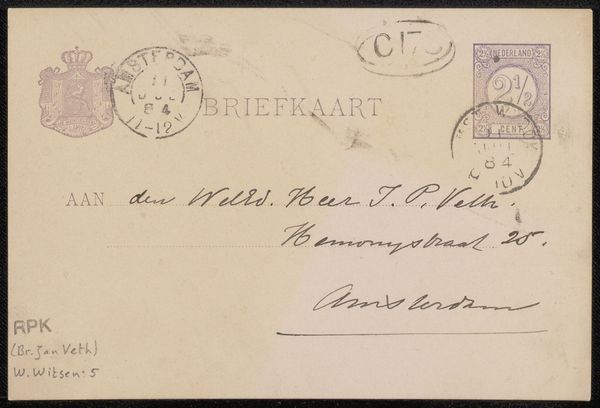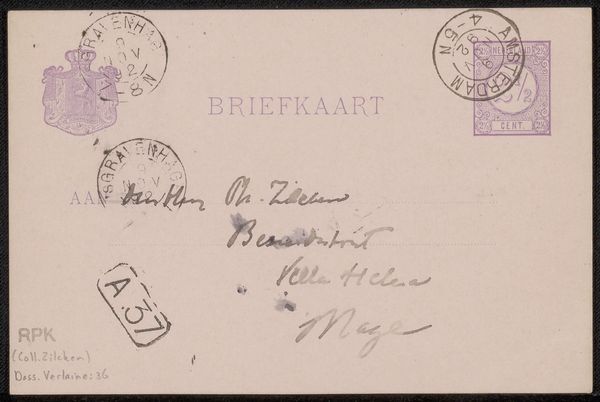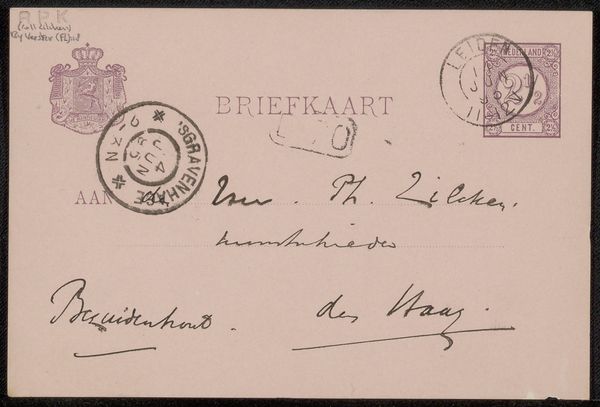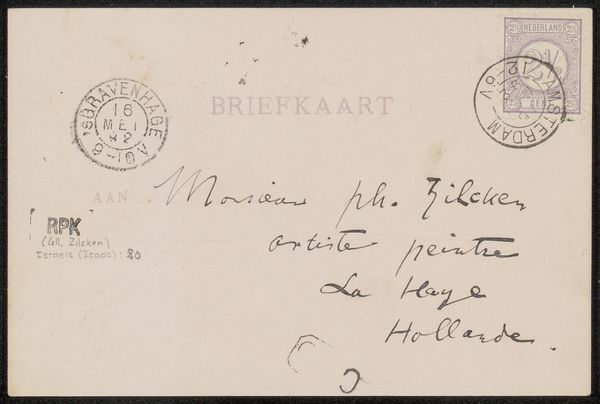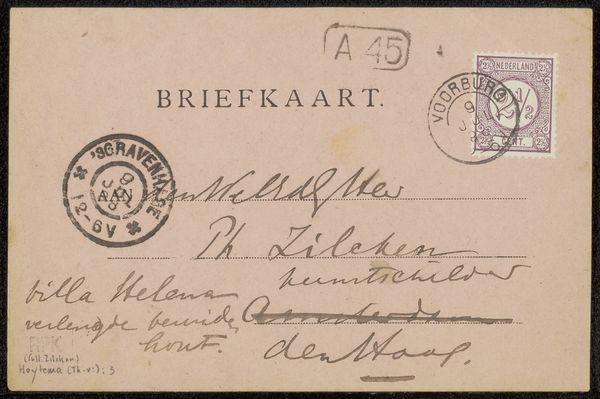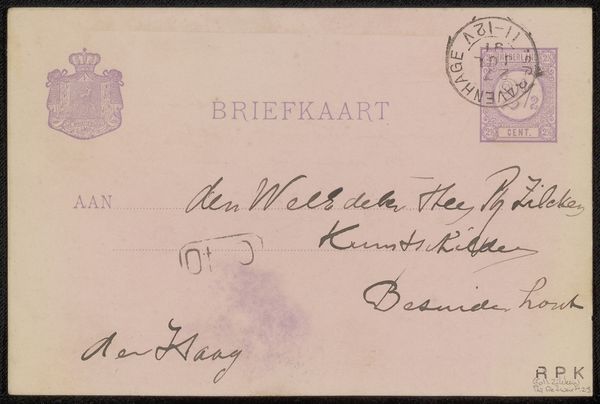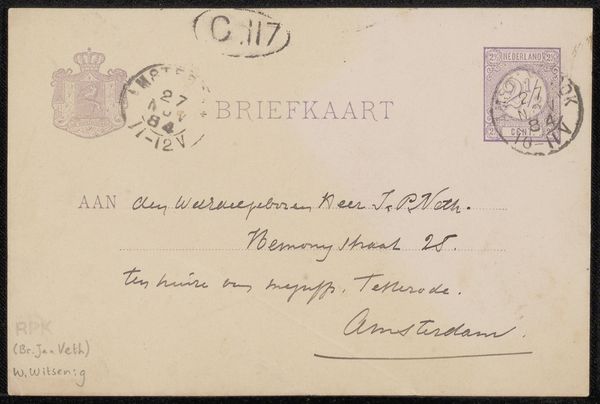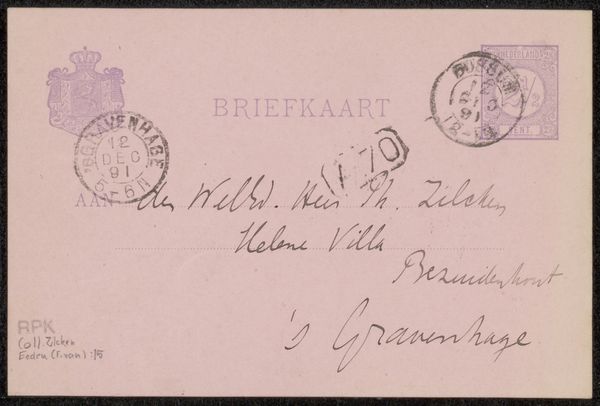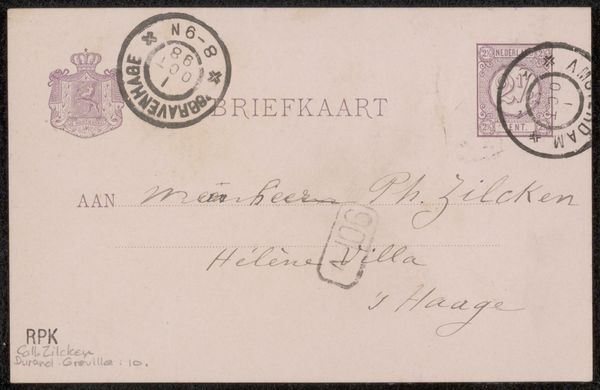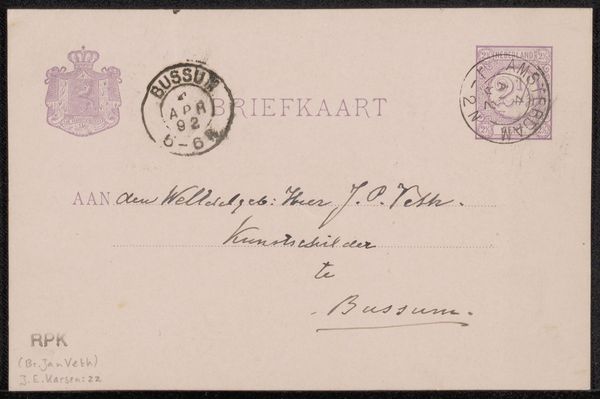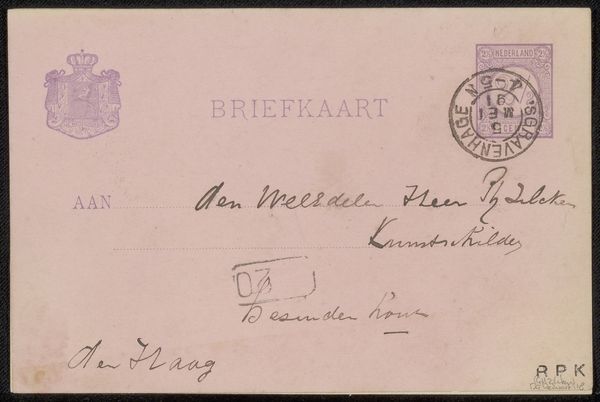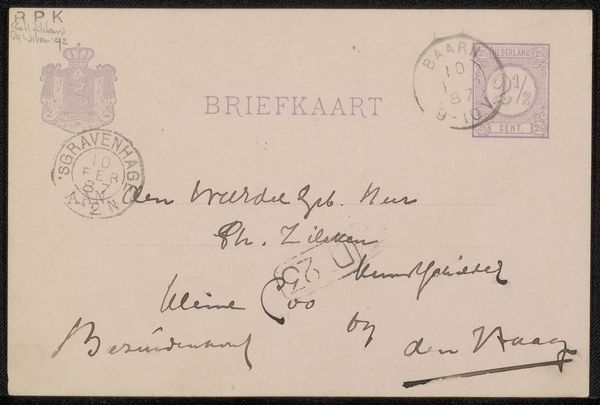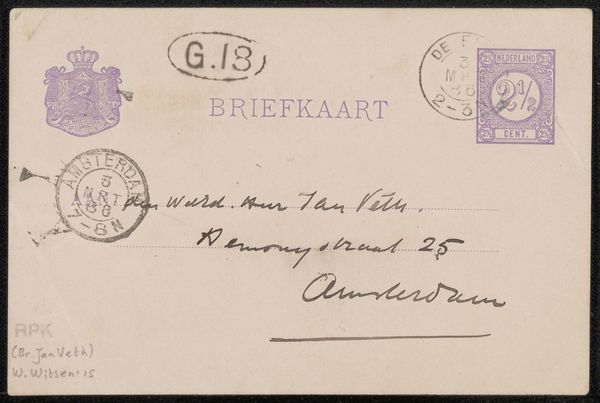
drawing, ink, pen
#
portrait
#
drawing
#
pen sketch
#
ink
#
pen work
#
pen
#
calligraphy
Copyright: Rijks Museum: Open Domain
Editor: Here we have "Briefkaart aan Jan Veth," thought to be from 1886, made by Willem Witsen, using pen and ink. At first glance, it’s simply a handwritten postcard. It's interesting to see the details of its journey through the postal system, all those stamps. What's your take on it? Curator: This unassuming postcard is quite revealing about the art world of the late 19th century and the networks sustaining it. We see here the infrastructure of artistic exchange. What details can you find of the address? Editor: It’s addressed to "Mr. Jan Veth, Art Critic" at an address on "Remony Straat" in Amsterdam. What significance does the recipient’s title have? Curator: The fact that Witsen is corresponding with a known critic suggests a careful attempt to cultivate a relationship, maybe even sway a future review. We must also consider the societal role of art critics as gatekeepers. They could significantly influence an artist's career trajectory and public perception. Does it surprise you that such exchanges happened, in effect "behind the scenes?" Editor: It does give you a different view on how the art world actually functions! What else jumps out at you? Curator: Note the date and the Amsterdam postage. We also see, from other handwriting, it’s being treated as an archival document: “(Br. Jan Veth) W. Witsen: 16”. The very existence of this postcard in a museum collection highlights the constructed nature of art history and which pieces of communication and art were selected to represent artists by museums. Editor: So, a simple postcard becomes a lens to view artistic influence and art history's selection process! I had no idea!
Comments
No comments
Be the first to comment and join the conversation on the ultimate creative platform.
